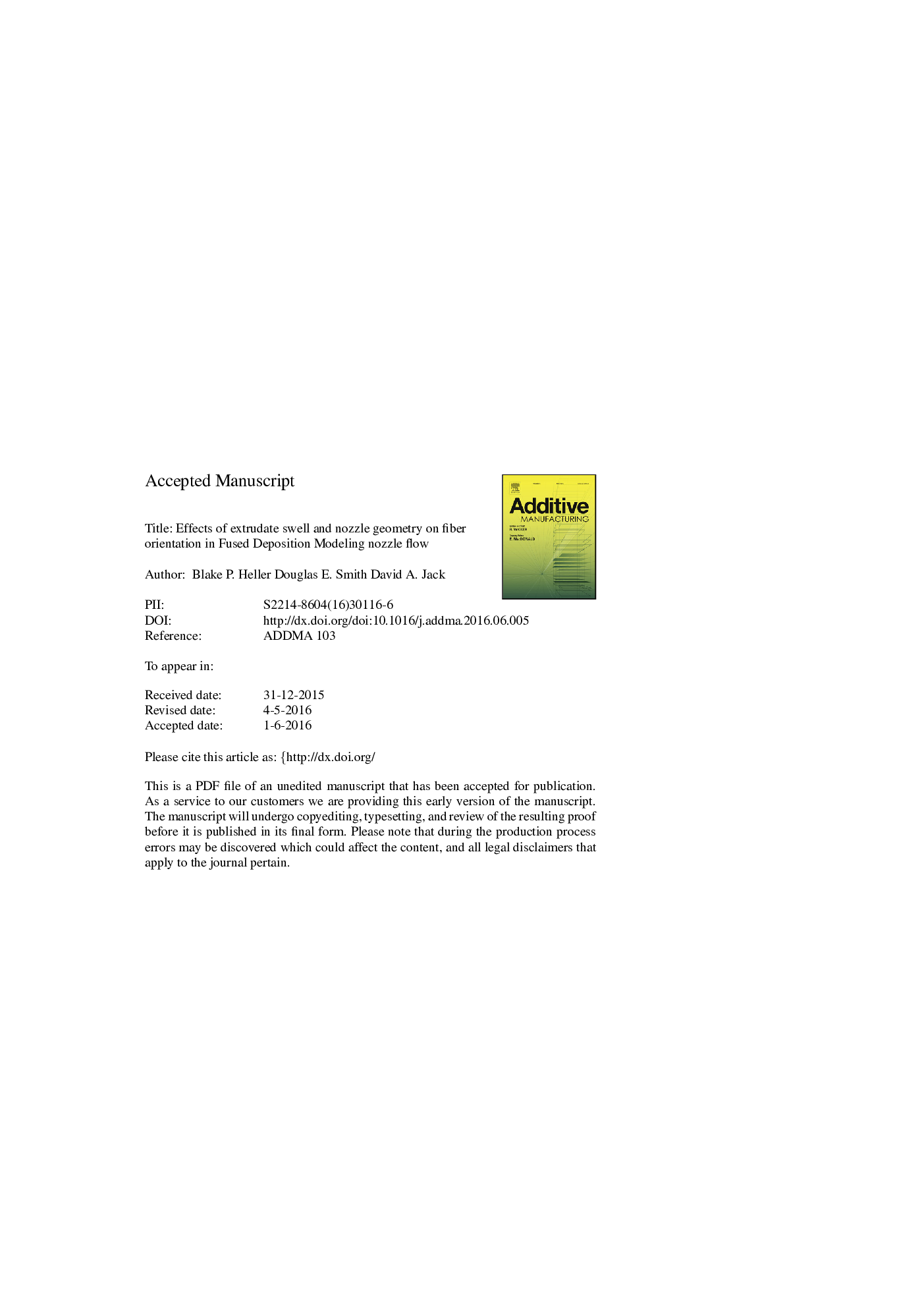| Article ID | Journal | Published Year | Pages | File Type |
|---|---|---|---|---|
| 5020066 | Additive Manufacturing | 2016 | 36 Pages |
Abstract
The viability of Fused Filament Fabrication (FFF) as an Additive Manufacturing (AM) method is improved by including discrete carbon fibers in the polymer feedstock. The resulting carbon fiber polymer composite enhances mechanical and thermal properties, where improvements are directly related to the orientation of the carbon fibers within the extruded polymer composite. Fiber orientation in the polymer melt is affected by the flow field which is defined by the melt flow geometry including flow in the nozzle convergence and extrudate swell. This paper presents a computational approach for modeling the polymer melt flow and the associated effects of nozzle geometry and extrudate swell on fiber orientation in the extruded polymer. The finite element method is used to evaluate Stokes flow in the axisymmetric flow field of an FFF nozzle. Fiber orientation tensors are calculated throughout the fluid domain using the Orthotropic Fitted Closure and the Folgar-Tucker isotropic fiber interaction model. The radial and axial modulus of the extruded polymer is then calculated from fiber orientation tensors within the composite at the nozzle exit. Fiber orientation along the extrudate axis is shown to increase due to elongation flow within the nozzle convergence zone and decrease in the extrudate swell such that the modulus of elasticity of the extruded polymer is moderately affected by extrudate swell and substantially affected by the nozzle geometry.
Keywords
Related Topics
Physical Sciences and Engineering
Engineering
Industrial and Manufacturing Engineering
Authors
Blake P. Heller, Douglas E. Smith, David A. Jack,
